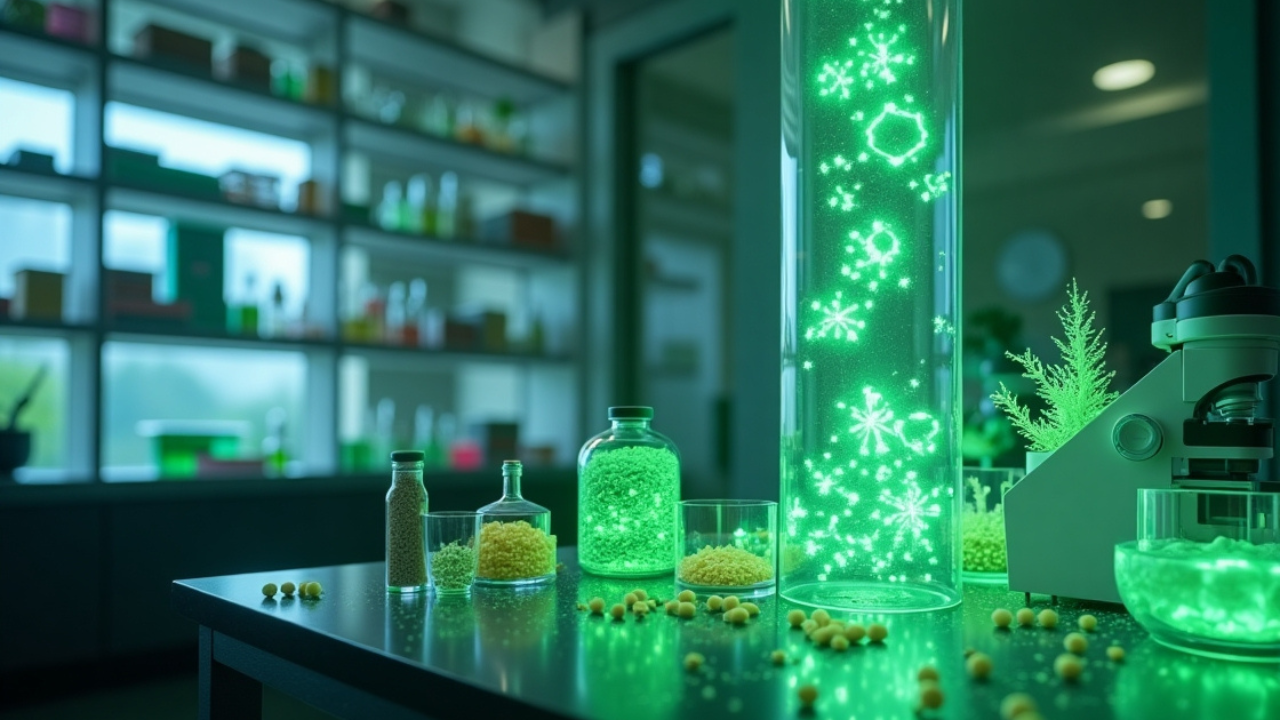In 2025, sustainability is no longer just a buzzword; it’s a way of life. And when it comes to material science, one term is gaining serious attention: green nanotechnology. This innovative fusion of environmental awareness and advanced nanoscience is changing how we design, produce, and apply materials across industries.
But what exactly is green nanotechnology, and why is it such a game-changer in the quest for a cleaner, greener planet? Let’s explore how this remarkable technology is powering eco-innovation and crafting the next generation of sustainable materials.
🌱 What Is Green Nanotechnology?
At its core, green nanotechnology refers to the development of nanoscale materials and processes that are environmentally friendly throughout their entire lifecycle, from design to disposal. Unlike traditional nanotechnology, which may involve toxic chemicals or energy-intensive methods, green nanotech aims to reduce environmental harm while enhancing performance.

The approach emphasizes:
- Using renewable resources
- Reducing waste and pollution
- Improving energy efficiency
- Designing safer nanomaterials
It’s not just about miniaturization—it’s about mindful innovation at the tiniest scale.
🔍 Why 2025 Is a Milestone Year
The year 2025 marks a tipping point. Climate challenges, rising resource demands, and global sustainability goals have accelerated investments in green nanotechnology. Governments, industries, and startups are now pushing for materials that don’t just perform better—they must do better for the planet.
For instance, initiatives like the European Green Deal, the U.S. Inflation Reduction Act, and China’s carbon-neutral roadmap are boosting research in eco-friendly nanotech applications across sectors like:
- Renewable energy
- Construction
- Water purification
- Packaging
- Electronics
🧪 Sustainable Nanomaterials: The Heart of Innovation
One of the most exciting areas of green nanotechnology is the development of sustainable nanomaterials. These materials are engineered to have unique properties—such as strength, flexibility, or conductivity—while minimizing ecological impact.

Examples include:
- Nanocellulose: Made from plant fibers, it’s lightweight, biodegradable, and stronger than steel by weight.
- Silica nanoparticles from rice husks: Turning agricultural waste into high-value materials for paints, rubbers, and coatings.
- Chitosan nanocomposites: Derived from seafood waste, used in biodegradable packaging and antimicrobial surfaces.
These materials offer greener alternatives to plastics, metals, and conventional composites—without sacrificing performance.
⚡ Energy-Efficient Solutions Powered by Nanotech
Another key advantage of green nanotechnology lies in energy efficiency. Imagine solar panels that capture more sunlight, batteries that store more energy with less environmental cost, and insulation materials that regulate indoor temperature naturally.
For example:
- Quantum dot solar cells are now being developed using non-toxic, earth-abundant materials, significantly improving efficiency.
- Nanostructured electrodes in lithium-ion batteries reduce the need for rare metals and increase lifespan.
- Thermo-regulating coatings made from nano-particles help cut energy bills in homes and offices.
These innovations align perfectly with the growing demand for clean energy technologies that support net-zero emissions.
💧 Tackling Environmental Problems with Green Nanotech
In 2025, water scarcity and pollution remain critical global issues. Fortunately, green nanotechnology is proving to be a powerful tool in water purification and environmental remediation.

Nanomaterials like titanium dioxide and graphene oxide are now being engineered to:
- Break down toxic pollutants in water and air
- Filter heavy metals and microbes
- Remove oil spills using biodegradable nanosponges
Not only are these methods more effective than traditional systems, but they’re also less harmful to the environment, aligning with circular economy goals.
🏗️ Revolutionizing Construction with Eco-Friendly Nanotech
The construction industry—responsible for a massive portion of global carbon emissions—is undergoing a green transformation thanks to green nanotechnology.

Here's how:
- Nano-enhanced concrete requires less cement and offers higher durability, reducing CO₂ emissions.
- Self-cleaning nanocoatings on glass reduce maintenance and energy use in buildings.
- Phase-change materials at the nanoscale help stabilize indoor temperatures without HVAC systems.
All these developments support the creation of smart, sustainable cities that balance innovation with responsibility.
♻️ Waste-to-Value: Giving Trash a New Life
A major goal of green nanotechnology is to support a circular economy, where waste materials are not just discarded but reused and upcycled into high-value products.

Some impressive examples include:
- Turning plastic waste into carbon nanotubes for batteries
- Creating bio-based polymers from food industry waste for packaging
- Converting CO₂ emissions into valuable nanomaterials for sensors or catalysis
This shift from “take-make-dispose” to “recycle-reuse-innovate” is at the heart of sustainable progress in 2025.
🌐 Industries Embracing Green Nanotech
Many sectors are rethinking their practices to include green nanotechnology:
- Textile industry: Using nano-coatings for water resistance and antimicrobial properties without toxic chemicals
- Healthcare: Developing biodegradable nanocarriers for drug delivery with minimal side effects
- Agriculture: Formulating slow-release nano-fertilizers that reduce runoff and improve soil health
This cross-industry adoption shows that green nanotechnology isn’t limited to labs—it’s becoming a mainstream solution for real-world problems.
🔮 What’s Next?
As we move further into 2025 and beyond, the growth of green nanotechnology looks unstoppable. Startups and academic labs continue to push the boundaries, backed by increasing funding, policy support, and consumer demand for sustainable solutions.
Challenges remain, such as scaling up production, ensuring safety, and establishing regulatory standards—but the direction is clear. With collaboration and creativity, green nanotechnology will remain a cornerstone of material innovation for decades to come.
✅ Final Thoughts
The power of green nanotechnology lies in its ability to rethink the very materials that build our world, from buildings and batteries to water filters and clothes. In 2025, it stands as a symbol of how science and sustainability can work hand in hand to create a cleaner, more resilient planet.
As we continue to innovate at the nanoscale, the future of material science looks not only smaller, but brighter, greener, and more hopeful than ever.







